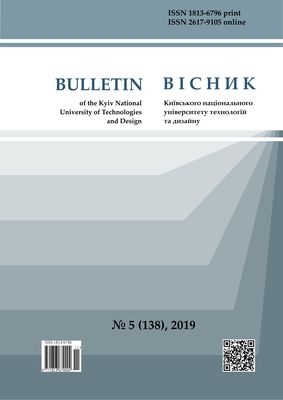Study of the fibrous sorbents chemosorption properties for the wastewater purification from Fe3+ ions
DOI:
https://doi.org/10.30857/1813-6796.2019.5.17Keywords:
chemisorption properties, fibrous waste, polyamide fibers, polyurethane fibers, vegetable polyphenols, iron compounds, wastewaterAbstract
Create new eco-friendly composite fibrous materials with sorption properties in relation to heavy metal ions in wastewater of industrial enterprises. To study the sorption capacity of synthetic fibers with respect to iron compounds. By the analytical methods determined the content of Fe3+ in model solutions of ferric ammonium alum before and after treatment, calculated the degree of exhaustion solution, %; by means of IR-spectroscopy, synthetic fibers were investigated before and after treatment with vegetable polyphenols of Tara, Quebracho and Fe3+ compounds to determine the mechanism of interaction. The proposed method of modification of fibrous materials have based on the treatment of material with tannins solutions with different nature vegetable polyphenols. It was determined that the sorption capacity of the fiber sorbent in relation to Fe3+ after treatment with of Tara tannins at a temperature of 40oC is higher than after treatment with Quebracho tannins under similar conditions. Processing during the first four hours is most effective. In this case, the degree of exhaustion solution of ferric ammonium alum reaches 90 %. The obtained sorbent has such advantages as high sorption activity and the ability to further modify, the methods of production are quite simple and cheap, and the possibility of producing sorbent from secondary raw materials allows to solve the problem of waste disposal.

